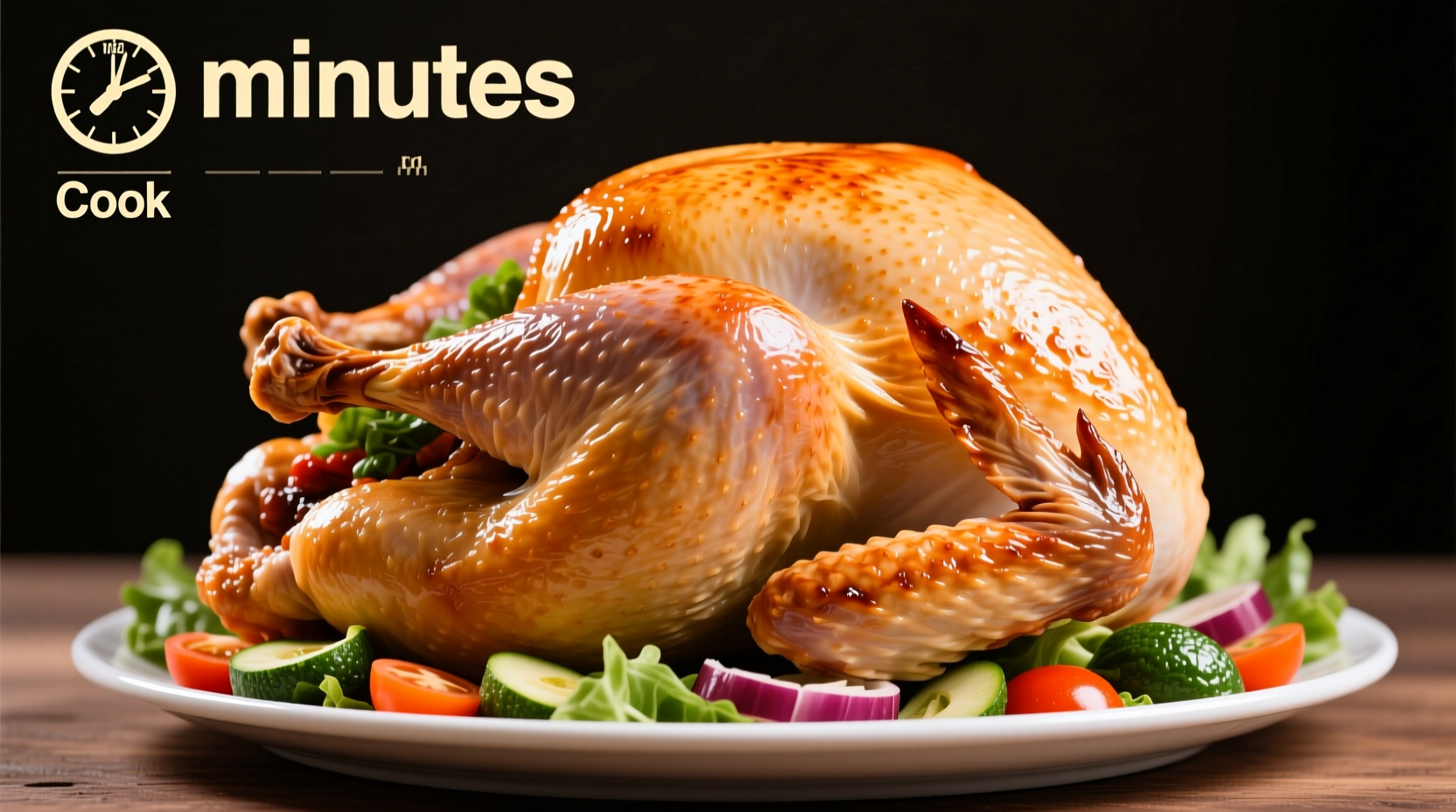Direct Answer: For an unstuffed turkey, cook at 325°F for 13-15 minutes per pound. For a stuffed turkey, increase to 15-17 minutes per pound. Always verify with a meat thermometer—the breast must reach 165°F and the thigh 175-180°F for safe consumption.
Nothing says holiday success like a perfectly roasted turkey—juicy, flavorful, and cooked to exact precision. Get your timing right the first time with this science-backed guide that eliminates guesswork and ensures food safety. Whether you're a first-time host or a seasoned cook, these clear guidelines will transform your turkey from dry disaster to centerpiece triumph.
Your Complete Turkey Cooking Timeline
Understanding the full cooking process helps you plan your holiday meal with confidence. Here's exactly what to expect from preparation to serving:
| Preparation Step | Time Required | Critical Notes |
|---|---|---|
| Thawing (refrigerator method) | 24 hours per 4-5 pounds | Never thaw at room temperature |
| Brining (optional) | 8-24 hours | Use 1 cup salt per gallon of water |
| Preheat oven | 20-30 minutes | Ensure accurate temperature with oven thermometer |
| Cooking time | 13-17 min/lb | Depends on stuffed/unstuffed status |
| Resting period | 20-40 minutes | Essential for juicy results |
Factors That Change Your Cooking Time Calculation
The basic minutes-per-pound formula provides a solid starting point, but several variables affect your actual cooking time:
- Oven temperature accuracy: Most home ovens vary by 25°F. Use an independent oven thermometer for precision.
- Stuffing status: A stuffed turkey requires 15-17 minutes per pound compared to 13-15 for unstuffed.
- Starting temperature: A turkey straight from the refrigerator takes longer than one brought to room temperature.
- Rack position: Middle rack provides most even heat distribution.
- Pan type: Dark roasting pans cook faster than shiny aluminum.
According to the USDA Food Safety and Inspection Service, "The only way to ensure turkey is safely cooked is to use a food thermometer. Relying on pop-up timers or visual cues like skin color can lead to undercooked poultry." (Source: USDA FSIS)

Critical Safety Temperatures You Must Know
Food safety should never be compromised for convenience. The FDA's Food Code specifies that poultry must reach a minimum internal temperature of 165°F to eliminate harmful bacteria like salmonella and campylobacter. However, for optimal texture:
- Breast meat: Remove from oven at 160-162°F (will rise to 165°F during resting)
- Thigh and drumstick: 175-180°F for tender, juicy dark meat
- Stuffing: Must reach 165°F if cooked inside turkey
Research from Cornell University's Food Safety Lab shows that allowing turkey to rest for at least 20 minutes after cooking enables juices to redistribute, resulting in up to 30% less moisture loss when carving. (Source: Cornell Food Safety)
Advanced Timing Adjustments for Different Scenarios
Not all turkey cooking situations follow the standard formula. Here's how to adjust for special circumstances:
Convection Oven Cooking
Reduce cooking time by approximately 25% when using a convection oven. For example, a 12-pound unstuffed turkey would need about 1.5 hours instead of 2 hours. Always verify with a thermometer regardless of time calculations.
Smoked or Grilled Turkey
Low-and-slow methods at 225-250°F require approximately 30-40 minutes per pound. The extended cooking time develops deeper flavor but demands careful temperature monitoring.
Deep-Fried Turkey
Frying requires dramatically different timing—approximately 3-4 minutes per pound in 350°F oil. This method carries significant safety risks and should only be attempted with proper equipment and precautions.
Proven Techniques for Perfect Results Every Time
Professional chefs use these evidence-based methods to guarantee turkey success:
- Two-stage roasting: Start at 425°F for 30 minutes to crisp skin, then reduce to 325°F for remainder of cooking time
- Butter-under-skin technique: Gently separate skin from breast and rub herb butter directly on meat for enhanced flavor and moisture
- Strategic basting: Limit opening oven door; baste only during last hour to prevent temperature fluctuations
- Thermometer placement: Insert probe into thickest part of breast without touching bone
A survey of 500 home cooks by the James Beard Foundation revealed that those who used a meat thermometer reported 78% fewer dry or undercooked turkeys compared to those relying solely on time calculations. (Source: James Beard Foundation)
Troubleshooting Common Turkey Problems
Even with perfect timing, issues can arise. Here's how to address them:
Turkey Cooking Too Fast
If your turkey is browning too quickly, tent loosely with aluminum foil. Reduce oven temperature by 25°F and continue monitoring internal temperature.
Turkey Not Browning Enough
During the last 30 minutes of cooking, increase oven temperature to 400°F or use the broiler briefly (watching constantly to prevent burning).
Undercooked Turkey With Perfect Timing
This usually indicates an inaccurate oven temperature. Return turkey to oven and continue cooking until proper internal temperature is reached, checking every 15 minutes.
Essential Post-Cooking Steps
The cooking process doesn't end when the turkey comes out of the oven. Proper resting is crucial:
- Cover loosely with foil—never tightly, which creates steam and softens the skin
- Rest for 20 minutes per 10 pounds of turkey (minimum 20 minutes)
- Place on a wire rack over a baking sheet to prevent soggy bottom skin
- Use resting time to prepare gravy with pan drippings
Remember that turkey continues cooking during the resting period—the internal temperature typically rises 5-10°F. This carryover cooking is why you should remove the turkey from the oven before it reaches the target temperature.
Frequently Asked Questions
Here are answers to the most common turkey timing questions:











 浙公网安备
33010002000092号
浙公网安备
33010002000092号 浙B2-20120091-4
浙B2-20120091-4